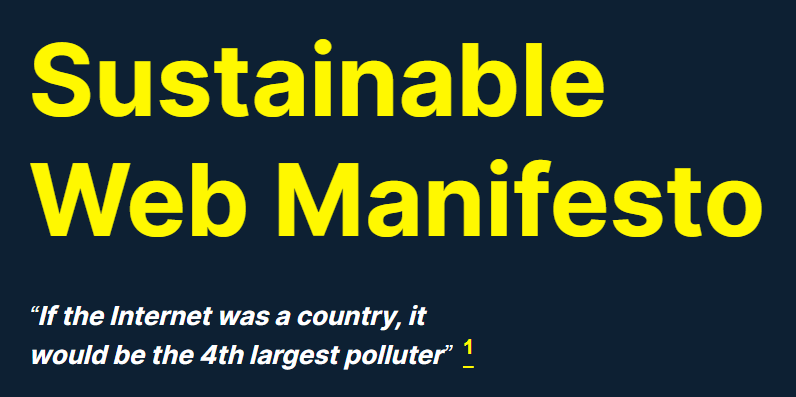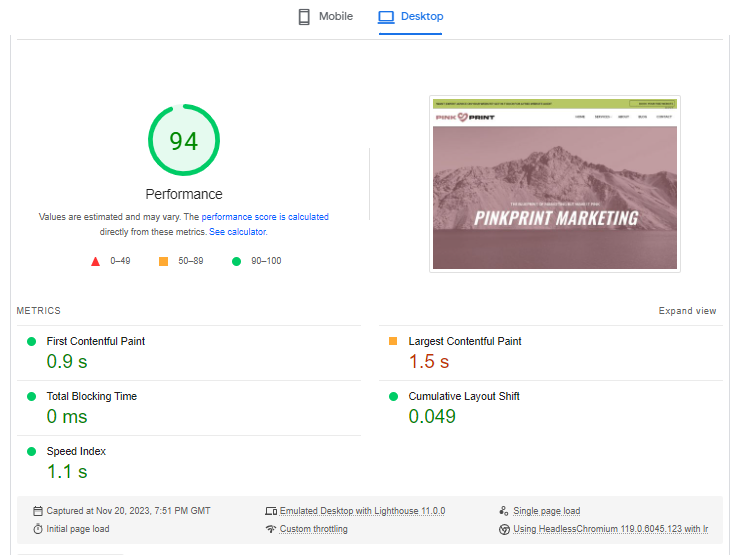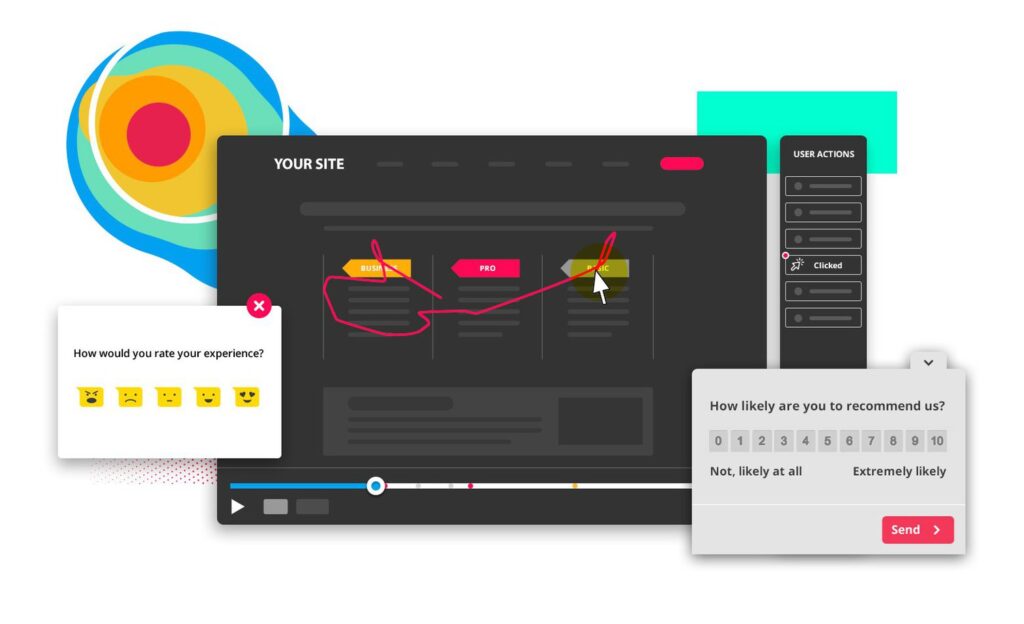want expert advice on your website? get in touch for a free website audit
book your free website audit
Understanding Sustainable Web Design:
Sustainable Web Design has been a trending topic within the digital industry for some time. The movement aims to reduce the environmental impact of websites and online platforms. The main focus of sustainable web design is the future of people, planet, and profit. Sustainable websites are ethical and value-adding. How? By creating websites that reduce carbon emissions and use less energy.
Now here’s the thing. Our constant use of the internet has some serious harmful effects on the planet. With currently 4% of CO2 emissions resulting from our digital habits, web designers and developers are now looking for ways to create websites that are not only visually appealing but are also sustainable. This can be achieved by using eco-friendly practices, such as reducing the carbon footprint of websites, using renewable energy sources, and minimising waste:
- Optimising overall website performance by using efficient coding techniques and reducing resource consumption to make sure your site loads at lightning speed. This not only leads to your site having a positive impact on the environment but also helps boost your search rankings. Google loves it when your site is lightning-fast and is likely to rank you higher based on this. A win-win in my eyes.
- Sustainable websites also only use images that are well-optimised to reduce the loading speed and the number of resources it takes to load a site.
- Powering your hosting through green hosting is one of the most important steps you can take towards sustainable web design. Green hosting providers use renewable energy sources to power your website. This reduces the carbon footprint of your website.
So, if you’re thinking of giving your website a makeover, why not make it sustainable too?

Why Sustainable Web Design Matters:
The internet has been a game-changer in our lives. It helps us work smarter, communicate better, and get information easier. Everything is at our fingertips and the possibilities of the internet are truly endless. However, this digital world comes with a significant environmental cost. With users spending an average of 5.5 hours online each day and the internet user base projected to grow by 8.2%, reaching 9.8 billion by 2050, the need for sustainable web design starts to grow.
Sustainable web design is a great option for businesses looking to reduce their carbon footprint. It’s not just about having a sleek and functional website; it’s about making a conscious decision to lessen your environmental impact. Sustainable websites are also known to perform better and load faster. This helps improve the overall user-experience of your site.
It is also a strategic move that can paint your business in a positive light. Many consumers who are looking for ways to make a positive environmental impact often partner up with brands who share the same principles. They want to support businesses that care, that go the extra mile for the planet. By making your website more sustainable, you give your brand reputation a little boost in the right direction. It isn’t just a checkbox on your to-do list. It’s an opportunity to align your business with values that truly matter – to you, your customers, and the planet.
Now, let’s debunk a myth – sustainability is expensive. Despite the common belief that sustainability is expensive, investing in a website that helps the planet is actually a smart money move. This common misconception oftentimes hinders businesses from taking the leap to a more eco-friendly website. Optimising data usage and improving website performance can help you save on hosting and bandwidth costs. Embracing renewable energy sources to power your website can also help you cut down those energy bills in the long haul.
3 Key Principles Of Sustainable Web Design:

Efficiency:
One of the key principles of a sustainable website is efficiency. It is your secret weapon to make your website not only look good but also do good for the environment. Designers who implement sustainability aim to create websites that use minimal resources, including energy, bandwidth, and storage.
Longevity:
Longevity is another key principle of sustainable web design. Your website should age like fine wine and the key is to create websites that are built to last. I’m talking about sustainable web design that keeps your site looking fresh without constant touch-ups. Your website should be future-proof as constant retouching puts strain on the resources that are powering your website. It helps reduce your website’s carbon footprint while also helping your brand, business, and digital storefront stand the test of time.
Renewability:
Renewability is the third principle of sustainable web design. Having your website powered by a renewable energy source to tap into the mission of reducing your carbon footprint in the digital world.
Emphasis On Minimalism:
Sustainable sites are oftentimes minimalist. Minimalist sites are oftentimes sustainable. You will find that sustainable web design heavily pushes for the idea of minimalism as it reduces the amount of energy and resource consumption. No need for flashy graphics and distracting animations. It’s clean and simple. In the future, we can expect to see a greater emphasis on minimalism in web design, with designers and developers working to create products that are simple and streamlined.
You may also like: The Pros and Cons of Minimalist Web Design!
How To Implement Sustainable Web Design For Your Website:
Here’s a breakdown of how you can implement sustainable web design for your website, without compromising on aesthetics:
1. Conduct a Sustainable Web Design Audit:
A web design audit will help create a baseline to start making your website healthier and greener.
Ever wondered about your website’s carbon footprint? Tools like the Website Carbon Calculator and Digital Beacon are your website’s eco-tracker, keeping track of your carbon emissions. Tools like these will provide you with a rating so you can get a bigger picture and see the impact your website has on the environment.
Another important aspect you should look at is your site’s page speed. Pagespeed Insights will help you identify how optimised your site is and the resources needed to load your website. It’ll also provide you with insight into the next steps you need to take to improve your website’s performance.

2. Eco-friendly Design Choices:
When it comes to making your site sustainable, you need to be intentional about your choices in design. There’s no point putting a heavy graphic or found for the sake of putting one. Keep it minimal and let go of unnecessary baggage on your site. Swap out those .png files for .svg or .webp file types to add a touch of speed and sleekness to your site.
3. Use Green Web Hosting Services for a Lower Carbon Footprint
As I mentioned previously, opt for sustainable and green hosting to make sure your website runs on renewable energy. Look for ones that run on renewable energy sources like wind or solar power. These green hosting providers are centred around helping you reduce your carbon footprint, and by choosing them, you’re doing your part to help the planet.
Choosing green hosting services to power your website is also a smart move for your business reputation. Customers are paying more attention to how eco-friendly the companies they support are. So, having a website that runs on renewable energy can help you stand out from the crowd and create a positive image for your business.
Many green hosting providers also offer additional benefits such as energy-efficient servers and data centres, which can further reduce your website’s energy consumption. By switching to a green hosting service, you can actively contribute to the fight against climate change while maintaining a reliable and secure website for your business or personal use.
4. Create content that is SEO-Conscious:
SEO isn’t just about attracting any random visitor to your site. It’s about getting the right ones. The ones that are engaged in your content and the ones that have an interest in what you’re talking about. Being conscious of your SEO makes sure your website is reaching an audience that finds your content valuable. This will make reduce the environmental impact from a user standpoint as they no longer need to click on 10 different web pages to find the answer they’re looking for.
5. Streamline The user journey:
Those flashy pop-ups, cool interactive elements, and in-depth might seem like a great way to better engage your audience. However, these can often lead to users scrambling around trying to find the content they need.
Make your website easy for your users to navigate their way around. This will lead to less resource consumption as well as a much better experience for your users.
6. Take it easy with those website integrations:
Tools like Google Analytics and HotJar are great additions to any site. They track and analyse user behaviour is great for better understanding your audience. It also gives you the chance to improve your website as well as understand how users use your site. However, incorporating more tracking scripts adds a lot of bulk to your site. They increase the loading speed of your site as well as increase the amount of energy and resources needed to power your site. Having a few tracking scripts is great but stick to the essentials and don’t hoard your site with them.

7. Optimise Your Website’s Speed and Performance:
With all the energy that goes into powering data centres, speeding up your site can reduce the energy these servers consume. One way to do that is by trimming down the size of your files and images. Smaller files mean less energy used when your site loads up. Plus, it’s a win-win because smaller files also mean faster load times for your visitors.
Another way to optimise your website’s speed and performance is by using content delivery networks (CDNs) to distribute content to users more efficiently. CDNs work by storing copies of your site in different locations worldwide. When a user visits your site, the content is delivered from servers closest to the user. This cuts down on load times and makes the user experience so much smoother.
That cuts down on load times and makes everything run smoother. And hey, it’s not just good for speed – it’s good for the planet too!
You may also like: Why Site Speed Matters: Speed Up Your Website in 5 Easy Steps!
How Exactly Do Sustainable Web Design Practices Reduce Carbon Emissions?
Sustainable web design practices play a huge part in giving our planet some breathing room. They help reduce carbon emissions with a clever mix of code optimisation, shrinking server demands, and reducing the energy consumption necessary for website functionality. Cutting down on these components means websites can continue running as they should without consuming as much energy. Every pixel and packet shaved off also helps to speed things up with your site, giving users a much more positive experience.
Green website practices heavily focus on selecting an eco-friendly hosting option. This is because hosting a website is no small feat – it requires servers to be operating 24/7, which leads to energy consumption and carbon dioxide being pumped out into the air. By opting for hosting providers that use renewable energy sources or have carbon offset programs in place, websites can decrease their carbon footprint big time.
Plus, sustainable web design practices prioritise picking materials and resources that won’t hurt the environment. This means choosing eco-friendly design elements, such as images and videos optimised for web use, and being super picky about any extra features like plugins we add on to make sure they’re not messing up the planet either. By choosing greener options for building websites, we’re not only cutting down on the internet’s carbon emissions but also helping to keep our digital world more sustainable.
Common Sustainable Web Design FAQs:
FAQ: Are there any specific industries or types of websites where sustainable web design is particularly challenging or beneficial?
Despite the many benefits of sustainable web design, it isn’t a one-size-fits-all solution. Some industries, like graphic design, photography, and fashion, may struggle to balance stunning visuals with eco-friendly practices. However, these industries can also reap some serious benefits by going green. Websites within these industries often have a massive online presence, so cutting down on the environmental footprint of their website can make a huge difference.
On the other hand, industries that focus more on informational content such as news sites, educational platforms, and blogs are perfect candidates for sustainable web design. This is because these types of websites typically have a high volume of traffic and content, so they’ve got a real opportunity to make a positive impact.
FAQ: What are the potential drawbacks or limitations of sustainable web design?
While sustainable web design has its perks, there are also some potential drawbacks to consider. Take, for instance, the upfront costs. Creating a website with environmentally friendly features can hit your wallet hard. You might require specialised tools or tech, which doesn’t come cheap. This can be a barrier, especially for smaller businesses that are on a tight budget.
Plus, not everyone’s on board with the eco-friendly website movement. Your hosting provider might not even offer green options, and finding the right tools or software can be extremely time-consuming.
Another limitation is the potential impact on user experience. Some sustainable web design elements require you to sacrifice speed or functionality. It’s a trade-off where going green can significantly change the way your site looks and feels. For example, cutting down on server requests or simplifying designs can sometimes lead to slower load times or reduced functionality. If your site doesn’t deliver in terms of user experience, it’s not exactly what your visitors are looking for.
And let’s not forget about awareness. Not everyone’s clued in on the importance of sustainable web design and its benefits. Without buy-in and support from key decision-makers, it’s an uphill battle. It’ll be difficult to prioritise sustainability in web design projects as the stakeholders are not in the same boat. This could result in missing out on chances to really make a difference with your website.
